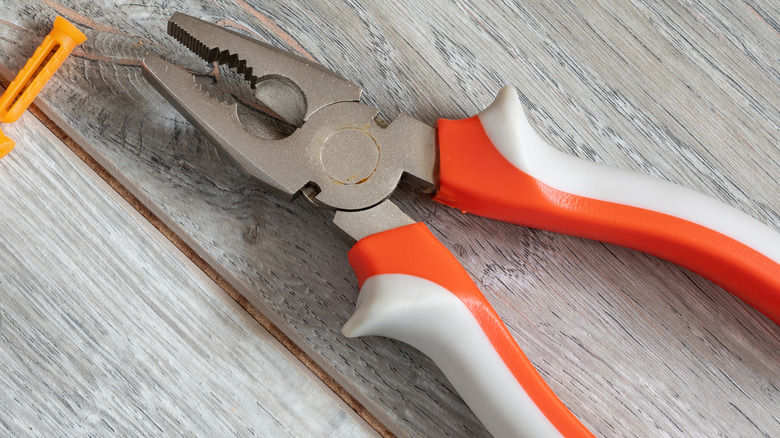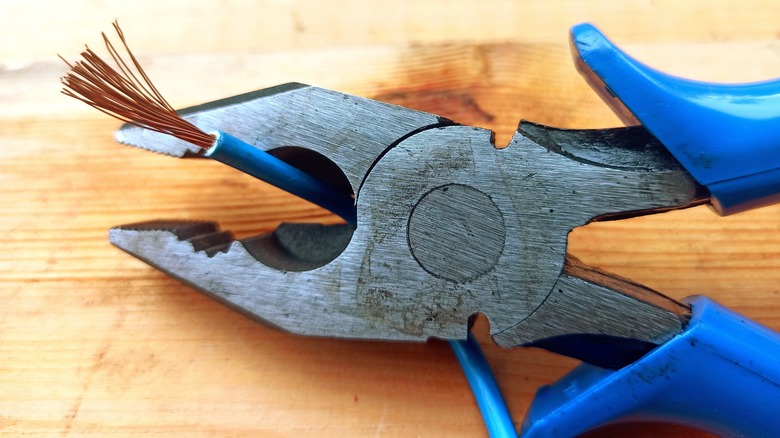The Hidden Feature You Didn't Know Your Pliers May Have
If you've ever tried to use the "wire cutter" part of standard pliers to nip the head of a nail or cut through field fencing all day long, you are familiar with both exhaustion and ruining otherwise perfectly good pliers. Even heavy-duty linesman's pliers have a cutter built into the jaws that is better for thinner or soft copper wire than for cutting through thick steel wires or metal rods. This is not an oversight or poor tool design because, though you might not have noticed it before, those same pliers have a much more robust cutting tool built in, and it can do all that hard cutting with far less effort and drama.
Right at the pivot point of some pliers where the two halves of the tool meet there's a cutter built into both sides. Called a joint cutter, this feature uses a few design characteristics to cut through steel like butter. Well, like really hard butter, anyway.
Of all the hidden features found on common tools, the joint cutter feature is one of the most useful. Two examples of great tool design make it work. First, joint cutters are as close to the pliers fulcrum (pivot point) as they can possibly get, and therefore get the most leverage from the device. They also make use of cutting edges that are almost perpendicular to the cable or wire to be cut, making it thicker and therefore less prone to damage when cutting hard or thick materials.
Which pliers have joint-cutters
Joint cutters are a feature of single joint pliers, and it might be most useful to know which pliers are most likely to have the feature if you're digging around in your toolbox or digging around in a hardware store. There are many different types of pliers homeowners should know, of course, but joint cutters are most commonly found on linesman's pliers, combination pliers, and fencing pliers. They can also be found on diagonal pliers, flat pliers, and others. Incidentally, both joint cutters and diagonal cutting pliers are sometimes referred to as side-cutters, so the term is a confusing and not particularly useful designation.
It makes perfect sense from a couple of angles that linesman's pliers, combination pliers, and fencing pliers would all have the feature. All of them are designed for users who regularly cut thick wire, and all are beefy, single-joint tools. Combination pliers and linesman's pliers are often described as synonymous, but they are different in that combination pliers are a more general-purpose design with pipe-gripping jaws and a more pointed profile. No single tool can replace fencing pliers if you're installing or repairing a lot of fencing, but combination pliers are — as you might expect — a flexible, capable alternative if you're looking for a tool that can be used for a lot of different tasks but you're not quite ready for that 14-in-1 hammer multi-tool from Home Depot that has everything you need for a quick-fix job.

